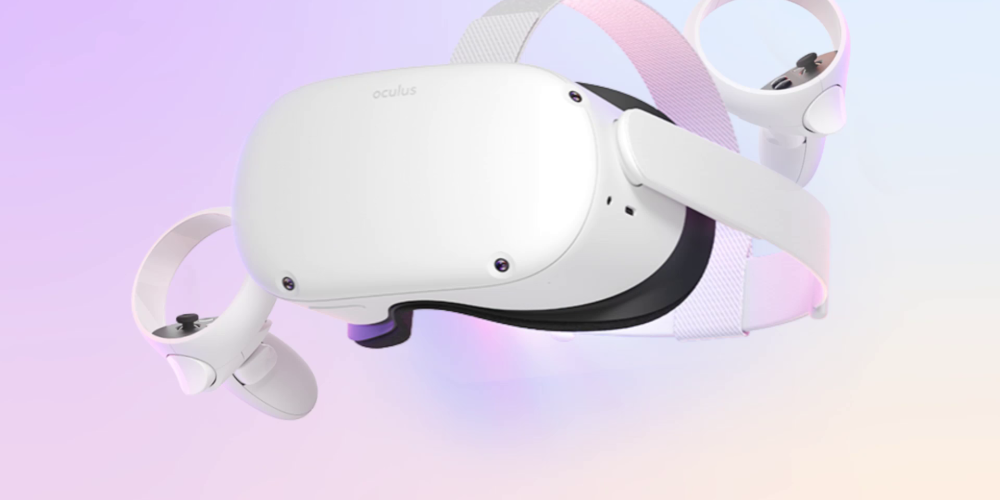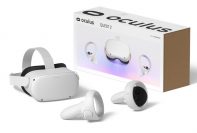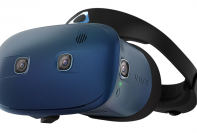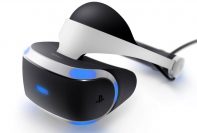Oculus VR is a brand owned by Facebook Technologies.
This brand launched the best standalone VR headset in 2019, called the Oculus Quest.
Over time, the company has been working to improve and update the software of the Quest in order to improve user experience.
Oculus has now launched another similar headset called the Oculus Quest 2.
There are two different models of Quest 2 – 64 GB variant and 256 GB variant.
The headset with 64GB storage space is priced at $299, while the 256GB variant costs $399.
The Quest 2 is better than the original Quest in terms of both the hardware and software.
An interesting thing to note about the Oculus Quest 2 is that while it is better than the original Quest model, it does not offer any new or additional features whatsoever.
Even the game library for both the headsets will be exactly the same.
So what is it that makes the Quest 2 better?
Our review will inform you about the improvements in the hardware, display, audio, design, controllers, and many other elements of the Quest 2.
Brief History of Oculus VR
Oculus was not always owned by Facebook Inc.
This company was founded by Palmer Lucky in 2012.
Initially, Oculus launched a Kick-starter campaign and managed to raise $2.5 million.
In March 2014, Facebook decided to acquire Oculus for $2.3 billion.
Comparison of Specs between Oculus Quest 1 and Quest 2
The Oculus Quest and Quest 2 have a number of similar and different features.
Most of the features in Quest 2 are an improved version of the ones already present in the original Quest.
There are however a few features that have not been updated yet.
However, Oculus claims that they will receive an update in the near future.
Similarities:
- Battery Life
The new Oculus Quest 2 makes use of internal batteries. The good thing about these batteries is that they can last for a long period of time. The battery life for the original Quest and Quest 2 is exactly the same. It ranges from 2 to 3 hours of use.
- Field of View
The field of view measures the area that a person can virtually see at a particular time. This can be either through a TV screen or a VR headset. The field of view of the original Quest and Quest 2 is exactly the same.
Differences:
- Processor
The original Quest has the processor Snapdragon 835.
The processor in Quest 2 is the highest-end processor called Snapdragon XR2.
Snapdragon XR2 is a means of combining artificial intelligence with 5G.
This technology improves the user experience by allowing them to get a vividly detailed 360o view of their surroundings in the virtual world.
- Battery Life of the Controller
Every VR headset has a hand controller. These controllers are powered by batteries.
The battery life of the Quest 2 controller is four times more compared to the original Quest.
- Weight
Oculus has tried to make the new Quest headsets smaller and lighter. The original Quest headset weighed around 571g.
The new Quest 2 is even lighter in terms of weight. It weighs only 503g.
- Storage
The storage space in the new Oculus Quest 2 is significantly larger than the original Quest.
The maximum storage space in the original was 128GB.
Whereas, the maximum storage space in Quest 2 is 256GB. Both of the headsets do not offer expandable storage as of yet.
- Strap
In terms of strap options, the original Quest offered a limited selection which contained only one rigid strap.
The new Quest 2 comes with a soft and comfortable strap. However, the company also offers a rigid strap with Quest 2.
The soft strap does not have a strong grip and support.
This results in more pressure being applied to the front of the head.
On the other hand, rigid straps help to balance out the weight of the headset and distribute it equally throughout the user’s head.
The Hardware of Oculus Quest 2
The hardware of the new Oculus Quest 2 is one of the most exciting aspects of this new headset.
However, some of the improvements in the hardware are still in the experimental phase.
The refresh rate is a good example of that.
There is an option of setting the refresh rate of the main menu at 90Hz.
However, the games on the new headset are still run at the old 72 Hz refresh rate.
If you use the Oculus link with Quest 2, the encoding quality is approximately the same as the original Quest.
But Oculus does say that these features will be updated soon after the launch of Quest (reference) 2.
Display
One of the biggest advantages that Quest 2 has over the original quest is the improvement in its resolution.
The per-eye resolution of the original Quest was 1440 x 1600, which is equivalent to 2.3 megapixels.
The new Quest 2 has a much higher resolution.
Its resolution is 1832 x 1920, which is equivalent to 3.5 megapixels.
Quest 2 has an LCD display, while the original Quest had an OLED display.
The colors in an LCD display are much brighter compared to an OLED.
But the light-emitting diodes present in OLED increase the contrast ratio which improves the overall display.
The resolution difference is very important because it is the first thing you notice when you use the Quest 2 VR headset.
The VR experience feels a lot more realistic due to the sharper resolution.
Lenses
Quest 2 makes use of the same lenses like the ones present in the original Quest.
They are flat lenses called ‘Fresnel lenses’.
The field of view of Quest 2 is also identical to the original Quest.
While it is immersive and provides a three-dimensional virtual space for the user, there is still room for improvement in this technology.
Audio
Like the original Quest, the speakers of the Quest 2 headset are hidden in the headband.
Because of the distance between the headband and the user’s ears, the audio of the headset is not very accurate.
The sound quality and volume of Quest 2 are exactly the same as the original Quest.
Both the headsets have very unimpressive sound quality.
The sound quality of other headsets like Index and Rift CV1 is much better than Quest 2.
The audio of the device is not limited to the user as well.
This means that everyone present in the room would be able to hear the sound emitted by the device.
This makes the VR experience less personalized for the user.
The audio quality of Quest 2 is not bad for most games.
This is because the majority of the games do not have any special audio requirements therefore, a wide variety of audio systems are sufficient.
However, the open audio system of Quest 2 could potentially ruin the VR experience while running a game that has special sound effects.
Quest 2 does have an option of using an external audio system with the device.
So the users can use their own earphones with their device.
However, this could be an inconvenience for some people.
IPD
IPD stands for the interpupillary distance, which is the gap between the centers of a person’s eyes.
The IPD of the new Quest 2 can be adjusted between three different positions.
These positions are 58mm, 63mm, and 68mm.
The IPD cannot be adjusted while the headset is turned on.
This can be an inconvenience because the user is not able to look through the lens while making the IPD adjustment.
Currently, there is no guide available that can help users select the right IPD for themselves.
The headset has to be removed and the lenses have to be tugged to the new position during the IPD adjustment.
Another disadvantage is that the IPD adjustments in Quest 2 are delineated by 2.5mm.
This means that the users would not be able to see any image precisely if it was 2.5mm off the center.
Design
There are some positive aspects and some negative aspects in the design of Quest 2.
The new headset is a lot more lightweight as compared to the original, which is a plus for most people.
It does, however, look significantly cheaper than the original Quest.
This is because the original had a fabric finish, while the new one looks like it is made of plastic.
Strap Options
This is one of the most important changes in the new Quest 2.
The default strap in the new Quest 2 is a soft strap.
Soft straps are known to have a significantly weaker grip and support as compared to rigid straps.
Rigid straps help keep the weight balanced on the head, but the soft straps put the majority of the weight towards the front of the head.
The good news is that Oculus has also released an Elite Strap, which is an accessory for Quest 2.
The Elite strap is a rigid strap.
The design of this strap is phenomenal because it makes the user experience a lot more comfortable by releasing the unnecessary pressure from the head.
However, this strap is not included in the $300 Quest 2 kit.
Rather, it needs to be bought separately for an additional $50.
Elite Battery Strap
The Elite battery strap is another accessory which is offered by Oculus for the new Quest 2.
These straps are very similar to the Elite straps.
The only difference is that there is an additional battery in the Elite battery strap.
This is why the Elite battery strap is much heavier than the normal strap.
But this additional weight is not a bad thing. In fact, it helps balance out the weight of the headset even more.
Controllers
The controllers for Quest 2 are more advanced than the original Quest controllers.
They are bigger in size as compared to the original Quest controllers.
The controllers are also a lot sturdier.
The design of the Quest 2 controllers resembles greatly the controllers of the original Rift CV1.
The shape of the controllers is designed in a way that makes them fit perfectly in the user’s hands.
The Quest 2 controllers are more powerful than the original Quest controllers.
Oculus claims that the power efficiency of these controllers is four times more than the original quest controllers.
These controllers are only compatible with Quest 2 and cannot be used with any other VR headsets.
Fit Pack
Another accessory that Oculus is offering in addition to Quest 2 is the fit pack.
The fit pack is an accessory kit that has light blockers and face pads.
The light blockers can be used for blocking any light coming from any of the gaps present within the device.
There are two face pads present in the fit pack.
One of them is to accommodate wider faces, and the other is for narrower faces.
The new Oculus comes with a face pad as well.
A wide variety of face pads are manufactured in order to appeal to a larger customer base with different face types.
The fit pack is being sold for $40.
Glasses Spacer
The Quest 2 comes with a free glasses spacer.
This spacer helps create extra space between the lens of the headset and the eyes of the user.
This innovation in the design makes Quest 2 more inclusive of all types of people.
However, there is a drawback to this spacer.
The larger space between the eyes and lenses makes it harder to see wider frames.
Tracking
The new Quest 2 makes use of four cameras for tracking purposes.
The main function of these cameras is controller tracking, hand tracking, and inside-out tracking.
The same tracking system was present in the original Quest as well.
This type of tracking system is sufficient for most games.
It reacts well to several external factors like ceiling fans, moving blinds, and bright lights.
But other headsets like Index have much better tracking systems.
Another feature that is available in the new Quest 2 is controller-less hand tracking.
This feature was also available in the original Quest.
This is a very useful feature because it enables the user to access every element of the game without needing a controller.
It makes the Quest 2 a lot more accessible.
So far, there are no improvements in this feature and it works very similarly as compared to the original quest.
Oculus does claim that this feature will be improved with time.
The controller-less hand tracking feature is not as efficient and responsive as controller tracking.
System Interface
Since Oculus is a brand launched by Facebook, it is now compulsory to log in to the new Quest 2 with a Facebook account.
The system interface of the new Quest 2 is a lot catchier than the original Quest.
In the original Quest, the user had to get out of the game in order to access the system menu.
However, in Quest 2, the system menu can be accessed within the game as well.
A pass-through view can be set as the background with the new settings of home environments.
This is very convenient because it allows the user to view their controllers and they do not have to blindly search for them in the middle of the game.
It also makes transitioning from the real world to virtual reality a lot easier.
Voice Commands
Another cool feature that Oculus has introduced in Quest 2 is Voice commands.
This is activated by double-tapping the Oculus button.
There are many uses of this feature.
It can tell the amount of battery left in the headset, make Google searches through the Oculus Browser.
It also enables the user to search for games within the headset.
The improved features and the high-resolution display of the new Oculus Quest 2 increases the convenience of the Oculus browser significantly.
Compared to hand and controller tracking, voice command is a lot more effective and time-efficient.
Content Lineup
The content lineup of the new Quest 2 is a bit disappointing.
This is because no new games have been added to this headset.
All the games from the original Quest are available, along with some games taken from other platforms.
This is a drawback for people who are regular VR users.
This is because they get the same games that were available in the previous Quest model.
However, if you are new to the VR world, this headset offers over 200 games, including some of the VR hot favorites like Beat Saber, Vader Immortal, and many more.
Oculus has also promised to release new games and content very soon for Quest 2.
Since Oculus has decided to try 90Hz on an experimental basis, they have allowed the users to run only the main menu using this frame rate.
None of the games are compatible with the 90Hz setting and run at the old refresh rate of 72Hz.
Music Selection
The music selection in Quest 2 is very limited currently.
Only a few artists, like Panic at the Disco and Green Day, are present in the music library.
Oculus claims that this music library will be expanded sometime after the launch of the Oculus Quest 2.
The music library can be expanded by using Oculus Link as well.
Oculus Link
The Oculus link enables you to connect the new Quest 2 with a PC that supports VR.
This way, you can play all the games present in the Oculus library or any other VR library from your computer.
This helps increase the versatility of the Oculus Quest 2.
The USB cable which comes with Quest 2 is not sufficiently long for using with Link.
So it is better to buy a separate cable.
Just like the original Quest, the new Quest 2 has the option of using Oculus Link.
The games played with link run at 72Hz instead of 90Hz.
The video encoding is also not optimized according to the resolution of Quest 2.
This shows that they have lost interest in PC based VR in favor of standalone VR headsets.
Oculus did however make claims that they would update this after the launch of the headsets.
Price Point
The price of the new Quest 2 gives it a competitive edge over other rival brands.
It is one of the cheapest headsets out there.
For example, the VR headset of Index is sold for at least $999, which is more than double the price of Quest 2.
There are two options available in Quest 2 as well.
There is an affordable option for $299, and then there is an advanced option for $399.
The Compulsion of Having a Facebook Account
One of the biggest disadvantages of the new Quest 2 VR headset is that the user can only log in if they have a Facebook account.
This compulsion did not exist in the original Quest and a person could log in using their Oculus account.
But in the new Quest 2, it is mandatory to merge the Oculus account with a Facebook account in order to sign in.
Conclusion
The new Quest 2 is basically the best standalone VR headset in the market to this date.
If compared with the original Quest, Quest 2 has a better refresh rate, higher resolution, better controllers, more power, and many more added features.
However, there is still a margin for further improvements in the new Quest 2.
Some of the improvements, like the new refresh rate, are only on an experimental basis.
Oculus has also announced several post-launch updates and improvements for Quest 2.
Quest 2 is also the most inexpensive and affordable VR headset in the market.




